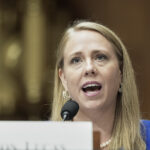In 2005, our country faced several devastating and record-setting natural disasters that left the lives of many Americans in ruins, and roiled the insurance marketplace and the nation’s overall economy. Estimates for 2005 hurricane losses are approximately $50 billion, greatly exceeding the previous record set in 2004, when 22 events caused $27.5 billion in insured losses. Six of the top 10 most costly catastrophes on record in the United States occurred in the 2004-’05 hurricane seasons.
The high costs of recent natural disasters, combined with the fear of future catastrophes, have restricted homeowners’ insurance availability. Those multibillion-dollar events have created exposure and solvency issues for companies that write homeowners and property insurance in disaster-prone areas. Many insurers have stopped writing new business in or withdrawn from at-risk markets, making it difficult for residents to find homeowners coverage. We are also witnessing increasing reports of a similar lack of availability and affordability for commercial property coverage.
The real issue: serving consumers
The Independent Insurance Agents and Brokers of America approaches the issue of natural disaster insurance from a simple perspective: We are here to serve consumers’ needs, whether it is helping them secure coverage to protect their families and their homes prior to an event, or assisting consumers after an event to ensure that claims are paid quickly and fully. As the intermediaries between consumers and their insurers, our members cannot and will not walk away from consumer needs as long as they demand coverage for those risks. Our industry must come together with policymakers to find a common solution that encourages participation in all markets.
The solution to insuring against future natural disasters starts with admitting there is a problem. It is no longer enough to say that the private market can handle catastrophic risks, when coverage is not sufficiently available at affordable rates. It is our experience that private market coverage is scarcely available at any rate in some areas — fast becoming an availability problem rather than an availability and affordability problem.
To serve consumers and protect taxpayers from ad hoc post-disaster funding, insuring against natural disasters is a national problem that requires a national solution. Despite our longstanding position that the insurance market is best served by limited government involvement, we believe that a federal solution is necessary to help provide capacity and to fill a void that the private market cannot and will not service. It is important to work closely with state insurance departments and state legislatures, because they are equipped to understand and serve the special needs of local consumers in local markets. Given the absence of affordable coverage and the exposure to consumers and taxpayers, we believe that there is a very limited and appropriate role for the federal government. We support proposals that increase insurance availability and affordability in catastrophe-prone areas.
A federal commission
Toward this goal of finding a solution to the problem of natural disaster insurance, the IIABA strongly supports the Catastrophic Disaster Risk and Insurance Commission Act, introduced by Rep. Debbie Wasserman Schultz, D-Fla., and cosponsored by nine representatives on both sides of the aisle.
The legislation would establish a national commission that is tasked with recommending policies to help ensure the availability and affordability of homeowners’ and commercial insurance coverage in natural disaster markets. This legislation is conceptually similar to S. 3114, the Commission on Catastrophic Disaster Risk and Insurance Act, which we also strongly support.
The Act establishes a national commission to recommend policies to help the federal government prepare for and manage disaster response, mitigate future costs, reduce potential fraud and abuse in a federal repayment program, and hedge any risk exposure assumed by the federal government in the adoption of a national catastrophe program.
The legislation requires the commission to: study all natural disasters, including hurricanes; ensure that the federal government’s role is fiscally responsible; analyze the appropriate role for states in stabilizing the P&C insurance and reinsurance markets; investigate the merits of all legislative proposals aimed at solving this market failure; and report to Congress with specific recommendations within six months, allowing for a comprehensive analysis while ensuring the timeline reflects the severity of the problem.
Input from agents
Finally, one of the most important aspects of the legislative proposals is that they would afford a seat at the table for all the stakeholders. It is vital to the success of the Commission that independent agents, consumers, mortgage lenders, regulators, academics, insurance companies and other stakeholders with unique perspectives be represented on the commission. It is only with the active participation of all stakeholders that we will be able to find a solution that encourages the private market to serve consumers and that protects taxpayers.
We hope the legislation will mark the beginning of a thorough examination of proposals that will encourage insurers to increase availability and affordability of homeowners’ and commercial insurance coverage in all markets.
Charles E. Symington Jr. is IIABA senior vice president for government affairs and federal relations.
Topics Catastrophe Natural Disasters Agencies Legislation Homeowners
Was this article valuable?
Here are more articles you may enjoy.


 Louvre Tightens Security After $102M Jewel Heist, Installs Bars on Infamous Window
Louvre Tightens Security After $102M Jewel Heist, Installs Bars on Infamous Window  Head of EEOC Urges White Men to Report Discrimination
Head of EEOC Urges White Men to Report Discrimination  Underwriter, Actuary Fears of AI Drop; Work Needed on Collaboration
Underwriter, Actuary Fears of AI Drop; Work Needed on Collaboration  Brown & Brown Files Suit Over Alleged Howden Poaching of 200+ Employees
Brown & Brown Files Suit Over Alleged Howden Poaching of 200+ Employees 


